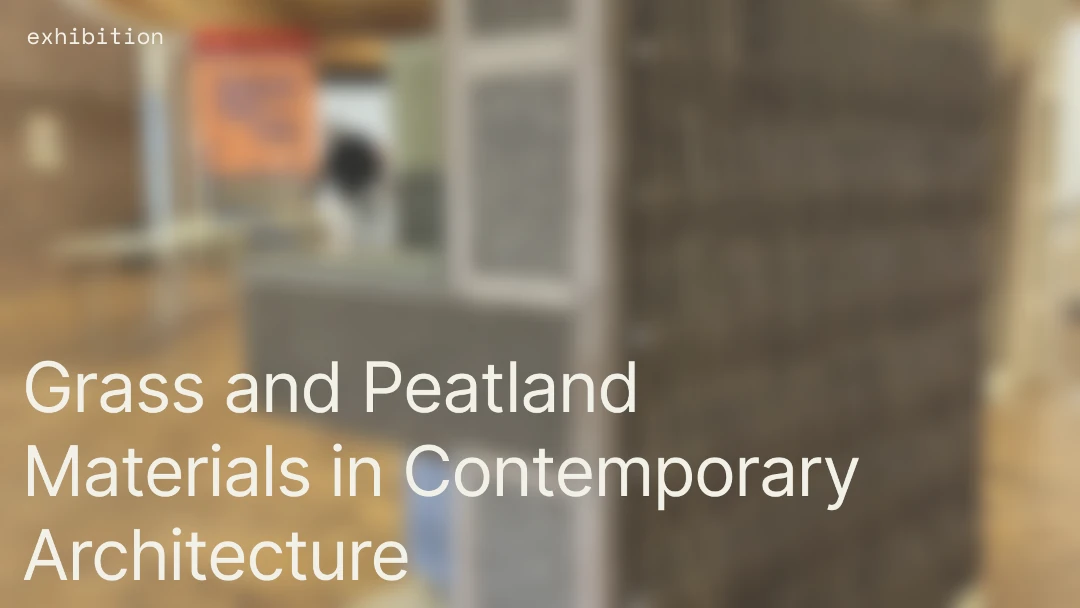
The built environment is estimated to be responsible for as much as 39% of the global energy-related CO2 emissions. A terrible track record for such a vital industry. But why does the construction industry pollute so much? Among the biggest contributors to the abysmal CO2 emissions of the built environment are construction materials. Cement and steel are the most predominant materials since they are an essential part of the foundations, as well as structural elements, of most buildings. With 4.1 billion tonnes of cement that have been produced in 2020, it is estimated that cement alone contributed as much as 8% to global CO2 emissions. As for steel, it outputs about 2 times as much CO2 as its weight during its production phase. Other materials such as PVC or polystyrene, typically used for plumbing and insulation respectively, also contribute negatively to the total environmental impact of a building. Yet, these materials are commonly found in the majority of today’s buildings, as well as being the go-to for new ones. In the age of anthropogenic climate change, the need for a radical transformation is clear. The built environment needs a shift in practices and habits if the minimal goals for emission cuts are to be met.

So how can we go about this? In recent years, the use of bio-based materials has seen a welcome resurgence. They are not new, as humans have been using timber and straw in construction for thousands of years. However, recent technological advances have expanded the range of available materials, including hemp, bamboo, cork, straw bales, eelgrass, and even mycelium, the root structure of mushrooms. This renaissance of biomaterials has also expanded their spectrum of uses, making them a very attractive alternative to traditional materials.
Take timber for example. Despite being one of the oldest construction materials around it has only recently seen a new uptick in popularity, with projects such as the Mini CO2 Multi-Storey House by JAJA Architects in Denmark, or Mjøstårnet by Voll Arkitekter in Norway showcasing its capabilities. Timber is extremely versatile, capable of being used for both interiors and exteriors; it can bear loads and it can be adapted into a variety of lengths, shapes, and colours. As far as environmental qualities, timber can be sourced locally, ensuring a short supply chain with minimal associated emissions. Furthermore, timber is a natural carbon sink, absorbing carbon dioxide from the atmosphere as the tree grows, and storing it even after it's been converted into a building material.

Timber is far from the only option though, and other bio-based materials can really shine when used for the right applications. Thermal insulation is one of the areas in which biomaterials can go toe-to-toe and even outperform most traditional options. For instance, straw bales have a high R-value, a measure of thermal resistance, making them excellent candidates for insulation panels. These kinds of panels can keep a building warm in winter and cool in summer with thermal performances on par with most mineral or fossil-based materials, such as rock wool, glass wool, and polystyrene. Good insulation reduces the demand for power-hungry heating and cooling solutions, hence indirectly contributing to energy savings. Straw, just like timber, is also extremely versatile. Architectural firm Henning Larsen has recently concluded the construction of the Feldballe School, a 250 m² building that emits as little as 6Kg CO2/m². This is largely the result of a careful selection of low-impact and bio-based materials, such as Ecocon’s compressed straw panels that form the inner walls.
Hempcrete, a composite material made from mixing the woody core of the hemp plant with a lime-based binder, is another example of an excellent bio-based insulator. It's not only a good thermal insulator but also has hygroscopic properties, meaning it can absorb and release moisture, thereby helping to regulate humidity within a building. Thanks to their natural moisture-regulating qualities, these panels stabilise the indoor microclimate throughout the seasons, avoiding problems such as mould growth that can arise with traditional insulators.
Indoor living spaces are indeed another area in which bio-based materials such as eelgrass can showcase their exceptional properties. The Danish company Søuld has rediscovered this plant, abundant in coastal zones and easily sourceable, as an acoustic insulator. With its naturally fibrous structure, eelgrass is great at stopping sound waves and reducing noise levels. Once again, the panels act as humidity adjusters by cyclically absorbing and releasing moisture according to the seasons. Furthermore, most biomaterials are non-toxic and can foster a much healthier indoor environment.
So why don’t we see more bio-based materials in the built environment?
One of the contributing factors is certainly the entrenchment of old habits. Cement and steel are no-brainers when it comes to material selection, and as long as there are no environmental constraints on a project, many architects and contractors often decide to take the easy road. Fortunately, this is about to change with stricter regulatory frameworks on upfront and embodied carbon on the horizon and an active community of environmentally conscious designers decided to make a difference. Still, one of the main reasons cited by biomaterials manufacturers is the poor visibility their products have on the market. Designers and other decision-makers often don’t have the necessary knowledge to make the most environmentally responsible decisions, even if they wanted to.




























